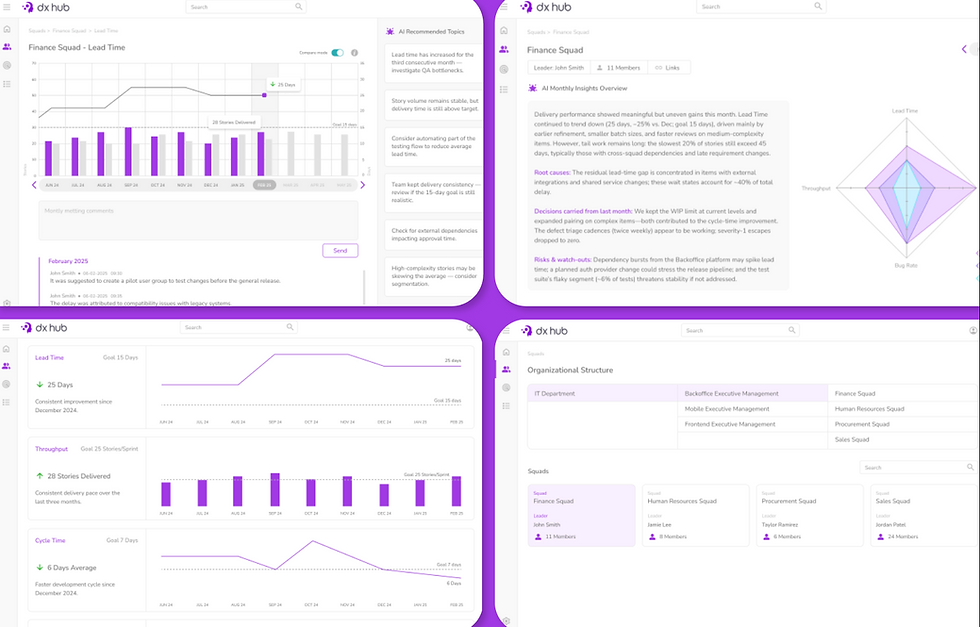Navigating Software Assessments: Your Essential Due Diligence Checklist
- Avalia

- Mar 19, 2024
- 3 min read
Updated: Jul 17
In the rapidly evolving world of technology, software is crucial for many companies. Whether you're considering investing in or acquiring a tech company, or struggling with software development costs and delivery speed, tech due diligence is key to offering clear insights. Below, we'll detail the usual steps we undertake in conducting tech due diligence.

Understanding the Importance of Software Due Diligence
Software due diligence is more than a cursory glance at the technical aspects of a potential acquisition. It involves a deep dive into the software's architecture, code quality, compliance, scalability, and potential liabilities. This process not only uncovers the strengths and weaknesses of the software but also aligns its capabilities with your strategic business goals.
For a more detailed exploration of this crucial process, we invite you to read our comprehensive article on What is Software Due Diligence?. This guide will provide you with a clearer understanding of how software due diligence can safeguard your investment and ensure alignment with your business objectives.
Laying the Foundation: Grasping Company History and Business Strategy
A good tech due diligence goes beyond identifying strengths, weaknesses, and providing action plans—it must encompass the business dimensions as well. That's why a thorough tech due diligence should commence with a deep dive into the company's history and business strategy.
Key points we usually address in this phase are:
Founding and Acquisition History.
Market Position and Expansion.
OKRs and business goals.
Organization structure.
Assessing the tech landscape: Product, People, Processes
When diving into technical aspects, a common tech due diligence approach is to structure the analysis around three key areas: product, people, and processes.
The emphasis on each varies with the company's maturity. Startups, which are in the phase of defining their operations, often prioritize product and team building, while established companies focus more on streamlining processes to enhance scalability and efficiency.
As such, recognizing the company's current stage is essential, as it inherently influences the focus and depth of tech due diligence in each dimension.
Product:
Product Introduction: Assess the product's market position, features, and development path, aligning it with your business goals.
Tech stack: evaluate programming and frameworks in use.
Software Architecture: Evaluate the architecture for robustness, scalability, and integration potential.
Code Quality and Technical Debt: Assess the quality of the code and identify any technical debt that may impact future development or integration.
Compliance and Security Review: Ensure the software adheres to industry standards and regulations and assess its security posture.
Scalability and Performance Analysis: Determine if the software can accommodate growth and perform efficiently under varying loads.
IT costs: assessing costs structure: provisioning, staff etc.
Intellectual Property (IP) Assessment: Verify the ownership and licensing of the software to avoid legal complications.
People:
Team Profile: Assess team skills, experiences, and roles to understand project capability.
Cultural Fit: Evaluate alignment with company culture and work preferences (in-person, hybrid, remote).
Turnover: "Identify reasons behind employee retention or departure for insights into workplace dynamics."
Key People: "Highlight crucial developers for product development and maintenance."
Learning Opportunities: "Check for training and development initiatives that attract and retain talent."
Processes:
IT and DevOps Practices: "Analyze operational infrastructure, deployment, and continuous integration processes."
Development Methodologies: "Assess agile methodologies and commitment to continuous improvement."
Metrics and KPIs: "Review performance metrics for productivity, quality, and timeliness in software development."
Documentation Quality: "Examine practices for knowledge sharing and efficient team onboarding."
Delivery Trends Analysis: "Analyze release cycle performance to identify improvement areas and bottlenecks."
Last but not least, it's important to pinpoint that although a significant portion of this checklist involves questionnaires and interviews, the true power lies in data for providing concrete evidence of the actual situation.
At Avalia, we specialize in analyzing data derived from the software development tools employed by the company under assessment, such as Jira and Git. This approach provides concrete evidence, presenting a more accurate picture than solely relying on interview responses.
Our company is dedicated to empowering your decisions with comprehensive analysis and insights. We invite you to explore our website, our services, and schedule a call with us. Discover why we are the best partner for your technology investment journey, helping you innovate faster and achieve more.


